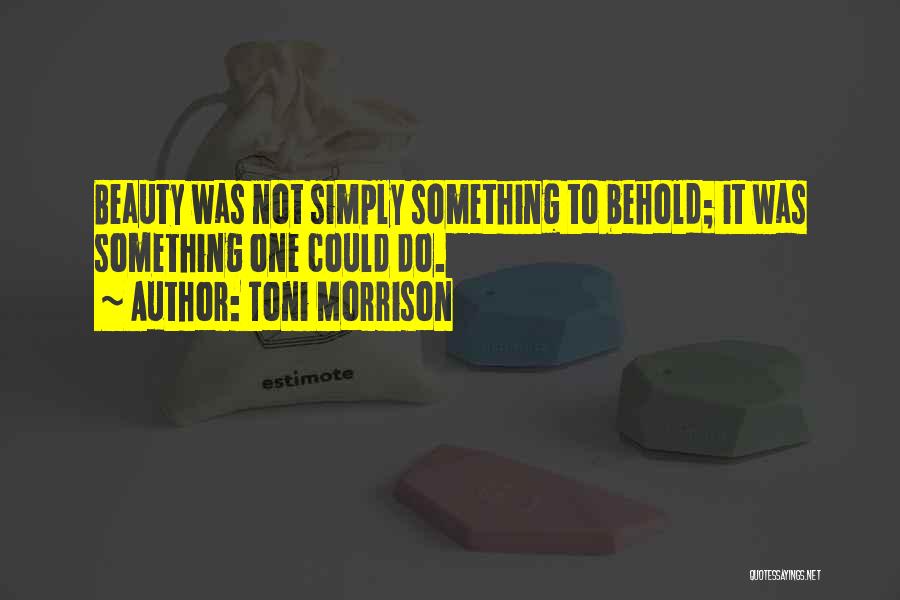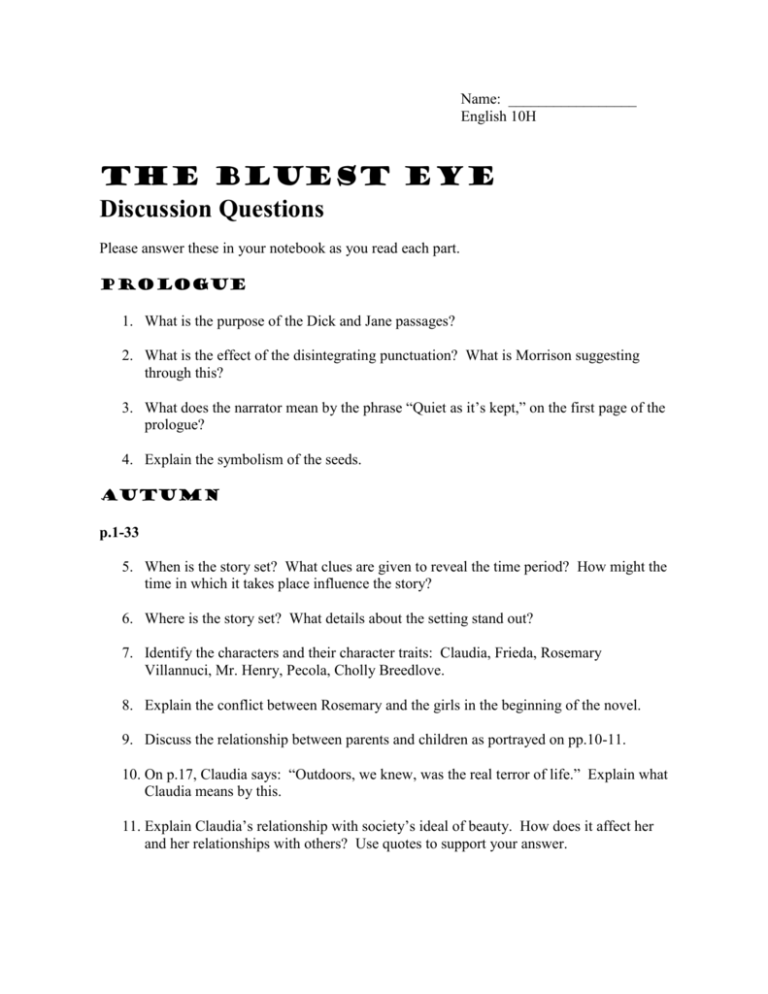

She began the book in 1965, when she was thirty-four years old. Morrison said that she wrote “The Bluest Eye” because she wanted to read it. And the truth is, by the time we leave Pecola, pecking at the waste on the margins of the world, we, too, may feel a measure of relief at no longer having to see what Morrison sees, her profound and unrelenting vision of what life can do to the forsaken. Cleanliness, of course, is next to godliness, and who would want to commit the double sin of being black and dirty? Pecola’s very presence exacerbates some of the other characters’ not so buried feelings about their own race and poverty-liabilities that push these Ohioans apart, rather than unite them: no one wants to be confronted with her own despair, especially when it’s reflected in the eyes of another despairing person. And it’s mostly aimed at black women-especially those mothers who don’t keep their home or their children clean. Instead, there’s a great deal of condemnation and parochial disapproval. To do so would be to think critically about the society that formed them and be moved to effect change. What can it mean, him sucking on that woman’s fingers? Is that love? Or is it what a man does to, and not with, a female? Another example: When Pecola goes to buy some of her treasured Mary Janes, the white shopkeeper sees her but can’t fix his attention on her nothing in his experience has prepared him to recognize a little black girl as an entity.ĭespite all this looking, few people, aside from Claudia, bear witness to much. A beloved boarder is consorting with a notorious prostitute. One example of many: Peering through a window in their family home, Claudia and her older sister, Frieda, catch a first glimpse of sex. In this short, intellectually expansive, emotionally questioning, and spiritually knowing book, the act of looking-and seeing-is described again and again. But in those harrowing final images, Claudia MacTeer, Morrison’s spirited nine-year-old narrator, sees what Pecola cannot, what her madness, the result of all that rejection, looks like to the rest of the town: “Grown people looked away children, those who were not frightened by her, laughed outright.” Eventually, Pecola does acquire, or believes she acquires, blue eyes. She knows what she’d find there: judgment of her blackness, her femaleness, the deforming language that has distorted the reflection of her face.

Pecola feels, or the world has made her feel, that if she had blue eyes she would, at last, be free-free from her unforgivable blackness, from what her community labelled ugliness long before she could look in a mirror and determine for herself who and what she was. The kind of blue eyes that she imagines lighting up the face of the girl on the wrapper of her favorite candies, Mary Janes.
#Quotes from the bluest eye movie
The kind of blue eyes Pecola has seen in pictures of the movie star Shirley Temple. And the dream is this: that someone-God, perhaps-will grant her the gift of blue eyes. Her only escape from the emotional abuse that her family and her classmates heap on her is to dream. When we meet Pecola, she is eleven years old but already ancient with sorrow. Like all the principal characters in “The Bluest Eye,” Pecola lives in Lorain, Ohio, where Morrison, who died last August, was born in 1931. Spectacular even alongside other early novels bathed in the blood of gothic dread-William Faulkner’s “As I Lay Dying” (1930), say, or Flannery O’Connor’s “Wise Blood” or Ralph Ellison’s “Invisible Man” (both published in 1952)-Morrison’s book cut a new path through the American literary landscape by placing young black girls at the center of the story.


 0 kommentar(er)
0 kommentar(er)
